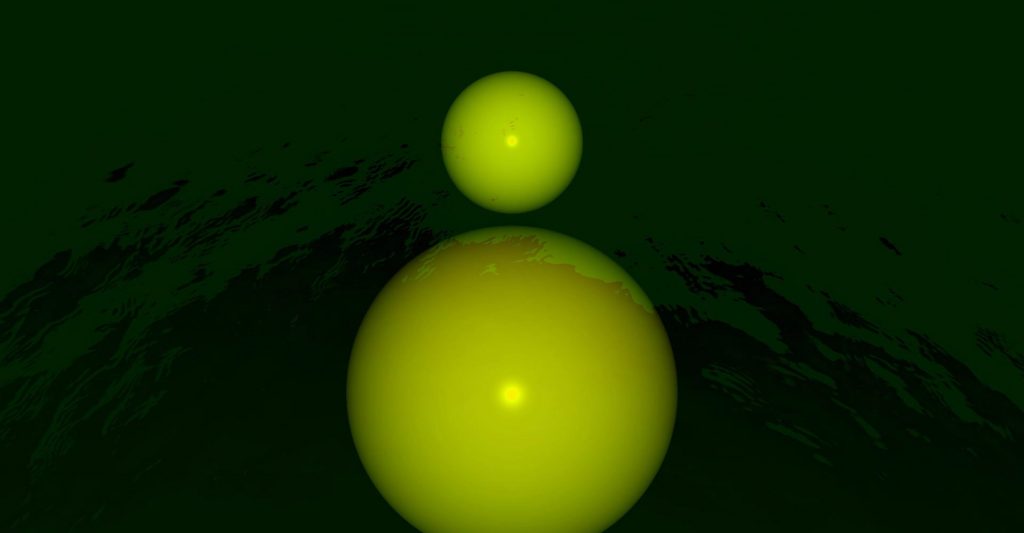
MARCH 9, 2023
Everything is Dust
Heige Kim, Sarah Aarons, Emmet Norris and Victor Castaneda H
- Thursday, March 9, 2023
- 5:00pm - 8:00pm Calit2 Theater
- Announcement
- Photos
- Video
- RSVP to ideasqi@ucsd.edu
DETAILS:
Dust surrounds us at all times. The most common dust particles, composed of our dead skin cells, can be found gathering quietly in places around our homes. Even the most common dust mixes with cosmic stardust and particles that have traveled by wind from remote and distant places. Migration of dust from the Sahara Desert across the Atlantic ocean to the rainforest of South America occurs throughout the year and replenishes the soil with nutrients and supplies phytoplankton with phosphorus and iron. Depending on where we live, the dust composition varies widely. In places like the Salton Sea, where the supply of water has ceased, wind abrades the exposed sea playa and transports dust particles that contain unhealthy amounts of toxic chemicals such as cadmium present in pesticides, causing asthma and other respiratory ailments for local residents. As noted by Hannah Holmes in “The Secret Life of Dust” in 2001, our world can be understood through a grain of dust that travels far and wide without borders.
But how do we study and visualize something mostly invisible, like dust particles?
“Everything is Dust” is a collaborative project with Sarah Aarons, an isotope geochemist, Ph.D. student Emmet Norris from Scripps Institution of Oceanography, Victor Castaneda H, multimedia artist, and Heige Kim, an M.F.A. candidate from the University of California, San Diego’s Visual Arts Department. They are working on a speculative visual/aural art installation using the movements of dust particles in real time. By using a similar scientific instrument that collects dust in specific research sites such as the San Jacinto Peak in Riverside County, “Everything is Dust” metaphorically and abstractly visualizes how we share and interact with the nearly invisible layers of dust particles through an immersive installation comprised of real-time video feeds, data visualizations, and sound interlaced with archival material of dust at the Qualcomm Institute’s Calit2 ‘Black Box’ Theater.
Bios
Sarah Aarons was born and raised in Alaska. She obtained her Ph.D. in Geology from the University of Michigan in 2016, and she then received a University of California Chancellor’s Postdoctoral Fellowship at UC Irvine, followed by the Ford Foundation Postdoctoral Fellowship at the University of Chicago. Sarah joined the faculty at Scripps Institution of Oceanography at UC San Diego in 2019. Sarah’s research focuses on understanding and tracking earth surface processes in a variety of environments on both geologic timescales and throughout the modern. Some examples of research projects include tracing mineral dust sources in Antarctic ice during major climate transitions, probing the utility and application of newly developed isotope systems, and exploring the ecological significance of dust in a variety of environments.
Victor Castaneda H was born and raised in San Fernando Valley. He received an M.F.A. from the University of California, San Diego. Castaneda H’s work deals with lapses in memory to create new ones by filling in the gaps of those memories, and he is currently working on his idea of the non-body. In which the experiences of the world’s organisms outside of the self can merge with the body and if it is even possible to achieve. He works with sculpture, digital spaces, and sound. His recent exhibitions include Oolong Gallery and his performance at The Brown Building.
Heige Kim’s multidisciplinary practice is tangible and conceptual investigations into everyday materials, remnants of our life that have been discarded in a forgotten landscape of waste sinks. Through artistic transformation and drawing upon scholars and artists across disciplines, she re-frames accumulating waste and explores the role of art in social and environmental change and art’s potential to form new relations. She has participated in numerous exhibitions and community-based projects in New York and California and working on her M.F.A. thesis.
Emmet Norris is interested in the interaction between climate systems and anthropogenic systems on the earth’s surface. He uses isotopic source apportionment techniques to characterize natural and anthropogenically emitted PM to understand their effect on climate, air quality and bioavailable nutrients. He has worked with dust from the artistic and emotional perspective as a designer with Studio Roosegaarde in The Netherlands, from the nutrient perspective as a farmer until age 18, from the human rights perspective with Bachpan Bachao Andolan (BBA) in India, and on geologic timescales as a Ph.D. student. Being fully human looks like being part of nature, then asking questions and taking action as part of an intact ecological system.
Big thanks to Amy Alexander, Memo Akten, Xandro Segade, Anya Gallaccio, Janelle Iglesias, Grace Grothaus, Fred Lee and Henry Haoyu Wang for their help with creative and technical development. This project was made possible with generous support from the expert team at the Qualcomm Institute and Visual Arts Facilities.



